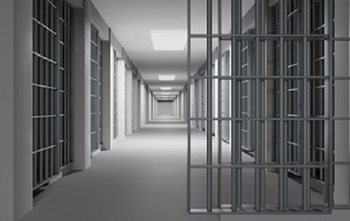
Correctional Medicine Is Often Driven by Lawsuits
Imagine, if you will, a nurse who is assigned to take care of 50 patients on a medical floor – by herself. Clearly, this is an impossible task. There are just too many patients for one nurse to adequately monitor. But this nurse gamely does her best.
Now let’s say that there is a bad outcome and an investigation. Even if the understaffing problem is recognized, it would be easy – and tempting – to scapegoat the nurse, especially if there was no intention of fixing the staffing problem (“We can’t afford to hire more nurses!”). Instead, the scapegoated nurse would be replaced by a new nurse, who, once again, would be expected to care for 50 patients.
Such were my thoughts when I read an article about the problems with the medical care for inmates in the Illinois prison system.
The article says that there have been so many problems with medical care in the Illinois prison system that a class action lawsuit has successfully forced Illinois to make sweeping changes to the prison medical system. What is not mentioned in the article is that similar lawsuits have happened before in other states and will happen again.
It starts here: the main factor that results in poor medical care in prison systems in the United States is that they tend to be severely underfunded. Because they are underfunded, prison medical systems are almost universally understaffed, especially with nurses, but also with medical practitioners.
Medical personnel do their best, but if you are working in a prison and are trying to shoulder the workload of two or three FTEs, well, it might not always turn out well.
So how did prisons end up in this situation?
- Funding and staffing for medical care have not kept pace with the huge increases in the number of incarcerated inmates that began in the 1970s. This is also true of other parts of the prison systems, such as housing. Many state prison systems are severely overcrowded.
- The prison inmate population is getting older and sicker. Older and sicker patients will, of course, need more medical care than a young and healthy cohort. Funding for medical care in prisons has not kept pace with the aging of American prison inmates.
- Nursing wages have risen steeply in the last several years. Prisons are competing with hospitals, outside clinics and everyone else for nurses. In general, prisons do not pay enough to be truly competitive. Prisons are hard paces to work and so should pay commensurately higher wages than, say, a hospital. But this is not the case in most prison systems. As a result, it is not unusual for a typical state prison system to have, say, one-third of its nursing positions vacant.
- Medical care in the United States is getting more and more expensive and prison budgets have not kept pace. Examples are plentiful but here is a good one: Treatment for hepatitis C is now highly effective but also very expensive. The prevalence of hepatitis C in prison inmates averages around 18%. To treat every one of them with a treatment that costs many, many thousands of dollars apiece – well you do the math for your state. It is a lot.
Because such funding has to be approved by each state’s legislature. And this is often a hard sell. Legislators may ask: “Why are we spending millions more on inmate healthcare when many of my not-incarcerated constituents cannot get health insurance?” This is a reasonable question. Plus, free constituents vote! Inmates do not. A legislator who introduces a bill to, say, fund millions for hepatitis C treatment for prison inmates may not be a legislator for long! Inmate medical care is a political “poison pill.”
This is why increases for prison healthcare funding often are driven by lawsuits. Since the Supreme Court has ruled that inmates have a constitutional right to necessary medical care (Estelle v. Gamble, 1976), a lawsuit that shows that inmates are not receiving adequate medical care will usually win. And this opens the door for legislators to write the check for increased prison medical funding without having to pay a political price. “I had to vote for this even though I didn’t want to,” they can say to constituents. This has happened many times in other states before Illinois and will continue to happen in the future.
In nutshell, then, this is our dysfunctional relationship with prison medical care in the United States:
As inmate population rises and inmates get older, funding for their medical care becomes inadequate. This results (among other things) in understaffed medical services. Legislatures won’t increase medical funding because that would be politically untenable. With time, underfunding and understaffing lead to bad medical outcomes. Advocacy attorneys then file class-action lawsuits on behalf of inmates alleging inadequate medical care – and win. This forces the legislature to increase funding for medical care, which they can now do without paying a political price. And then the cycle repeats itself.
This cycle is being played out over time in most U.S. states, including, probably, yours. So don’t be surprised by the next, inevitable, news article about a successful lawsuit forcing a state to increase funding for prison inmate medical care, because that is how the system works.
Original article by corrections1.com.

